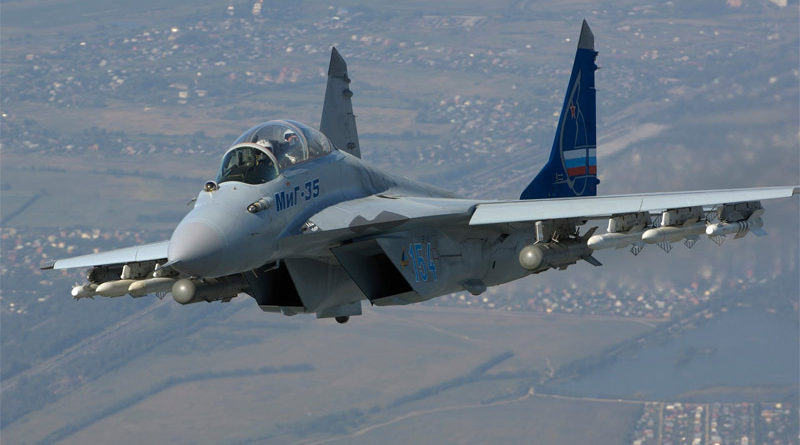Russia To Offer MiG-35 With Auto Landing, G-Force Protection For Indian Competition
24 March, 2020
Russia will offer an upgraded MiG-35 fighter jet equipped with an automatic landing and G-force protection systems as its entry for the Indian light fighter jet competition
Russia had received a request for information in 2019 and is awaiting a request for proposal from the Indian MoD to build over 100 jets in India, Director of the Russian Federal Service for Military-Technical Cooperation (FSVTS) of Russia Dmitry Shugaev had told Interfax news agency last week.
Russian sources told defenseworld.net that two new features added to the jet recently will make its debut in the Indian competition- a g-force protection system and an automatic landing system.
The upgrade will bring the Russian jet closer to the features list offered by others in the competition such as the Dassault Rafale and Lockheed Martin F-21. Russia upgraded its MiG-35 fighter aircraft during January-February 2020 with a g-force protection system and an automatic landing system. The move looks aimed at making the latest Russian jet appealing to air forces testing Western jet which already have these key features.
MiG-35 G-Force Protection System
Critical g-force protection system for high-manoeuvrability fighter jets such as MiG-35 works in conjunction with the helmet display system and reduces distraction caused to the pilots of monitoring the g-force using dashboard indicator. The system allows the pilot to overcome the critical g-force level by 1-2G by exerting additional force on the stick, as well as disabling the system altogether, either temporarily or permanently.
New Automatic Digital Landing System
Russia’s MiG Corporation has developed a new automatic, digital control system to be fitted on MiG-35 aircraft for easy landing of the jets. The digital system has already undergone tests. It makes difficult weather safer by allowing the pilot to use a glide path in automatic mode quicker, and continue decline till appearance of visibility.
However these additional features are already available on some of its competitors:
F-16 (F-21) Auto Land
The Auto land sequence is initiated during flight by an on-board safety pilot. Once the pilot moves to “hands-off”, the F-16 is controlled by an onboard computer. This guides through several phases of the landing sequence, culminating in a final approach to the runway touchdown point. The computer uses Lockheed Martin-developed algorithms to control the F-16’s attitude, glide slope, airspeed, and descent rate via throttle and flight control inputs until the aircraft comes to a stop on the runway, according to Lockheed Martin information.
F-16 G-Force
The cockpit and its bubble canopy give the pilot unobstructed forward and upward vision, and greatly improved vision over the side and to the rear. The seat-back angle is expanded to 30 degrees, increasing pilot comfort and gravity force tolerance. For easy and accurate control of the aircraft during high G-force combat manoeuvres, a side stick controller is used instead of the conventional centre-mounted stick. Hand pressure on the side stick controller sends electrical signals to actuators of flight control surfaces such as ailerons and rudder.
Rafale
The Rafale’s flight computer has been programmed to counteract pilot disorientation and to employ automatic recovery of the aircraft during negative flight conditions. During the take-off phase, another alarm will ensure the aircraft does not exceed the maximum load that can be handled by its landing gear brakes.
A new instrument has been installed which allows pilots to better evaluate the aircraft’s attitude. It will sound an alarm when it detects an unusual position. The seat is inclined rearwards at an angle of 29° to improve g-force tolerance during manoeuvring and to provide a less restricted external pilot view.
An intelligent flight suit worn by the pilot is automatically controlled by the aircraft to counteract in response to calculated g-forces.
Courtesy: Opera News/ indiandefensenews.in

